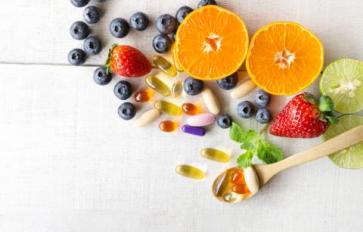
There are so very many reasons why more and more people are trading in the well-known white sugar, also known as table sugar, for natural sugar and other natural sweeteners. Some people seek a healthier lifestyle, whether by choice or medical necessity, while others may simply choose by taste or preference.
Some of the sweeteners on this list are well known while others may not be. Many of the natural sweeteners I discuss provide some sort of health benefit. I was actually amazed when I learned how many options there are that are even tastier than white sugar. The health benefits were just an added bonus. Let’s get started.
Maple Sugar
Many maple trees produce a syrup that contains a sugar content of 2%, which is the highest. Some people will use maple syrup as a sweetener while others prefer the maple sugar. The sugar is obtained the same exact way as the syrup, only it’s boiled down for much longer. The longer you boil down sap, the more water is boiled out – if you cook it long enough you’re left with a maple-flavored sugar that is fantastic for baking into sweets. Maple syrup contains amino acids such as magnesium and zinc, as well as a wealth of other vitamins and minerals.
Honey
Honey is one of the most common sugar replacements used. Honey not only contains a much lower glycemic index than sugar, but it is also packed full of healing benefits. Honey is my go-to replacement for recipes that call for corn syrup. Please note, it doesn’t work as well in recipes that call for dry sugars because of the consistency and moisture BUT never fear there is always powdered honey. I was amazed when I discovered powdered honey – as a baker, I was quite pleased to find something that works in place of confectioners’ sugar. Imagine a smooth whipped cream topping for a pie made with honey!
Coconut Sugar
Coconut sugar tastes nothing like coconut in any way shape or form: that’s because it is made from the flower blossoms of the coconut tree. Coconut sugar, also known as coconut palm sugar, isn’t as sweet as white sugar but it does have an amazing caramel flavor to it. The sugar looks very similar to brown sugar and can be used just like it, too. The naturally low glycemic content makes it safe for those who have diabetes. This sugar is full of amino acids such as magnesium, iron, zinc, and potassium.
Molasses
Sugarcane molasses isn’t very sweet but it’s so good for your health. There are three different grades of molasses known as mild, dark, and blackstrap. The blackstrap molasses is very dark in color and has a more potent and robust flavor to it, so much that it is often combined with another sweetener. All molasses contains iron, potassium, magnesium, copper, and calcium. The darker the molasses, the higher the values of these minerals (making blackstrap molasses the most concentrated).
Stevia
This beautiful plant is actually a sweet herb and doesn’t contain any sugar at all, but is still used as a sweetener. This makes stevia one of the better choices for those watching their sugar intake. A little goes a long way with stevia and that’s because it can be up to 300 times sweeter than white or brown sugars. There is a trick to using stevia: if you use too much in your recipe or coffee it will take on a bitter flavor. Not only does stevia contain zero sugar but it also contains zero calories. People on the Candida diet can even use stevia to sweeten their food and beverages.
Sugar Beets
The roots of this common beet contain a high concentration of sucrose, making it great for sugar. The beet’s roots are about 20% sugar according to the Agribusiness Handbook Volume 4. I have never personally used beet sugar but I am looking forward to trying it out.
Agave Nectar
This nectar comes from the agave plant that is native to Mexico. There are two varieties of agave: light and dark. In my opinion, the dark agave is more flavorful. The dark variety also provides more vitamins, minerals, and other nutrients. This sweetener has a low glycemic index, but the fructose levels are higher, which makes many hesitant of this sweetener (they are similar to those of high fructose corn syrup).
There are so many reasons to switch out your average white table sugar for some of nature’s delectable nectars, and a majority of them have to do with our health. When I kicked granulated white sugar out of my diet and swapped it for stevia and honey, I noticed I lost weight and felt better pretty quickly. The truth is, I didn’t even realize how white sugar was affecting my body until I stopped using it. It’s worth a shot to try something new every once in a while. Stay sweet, my friends!








